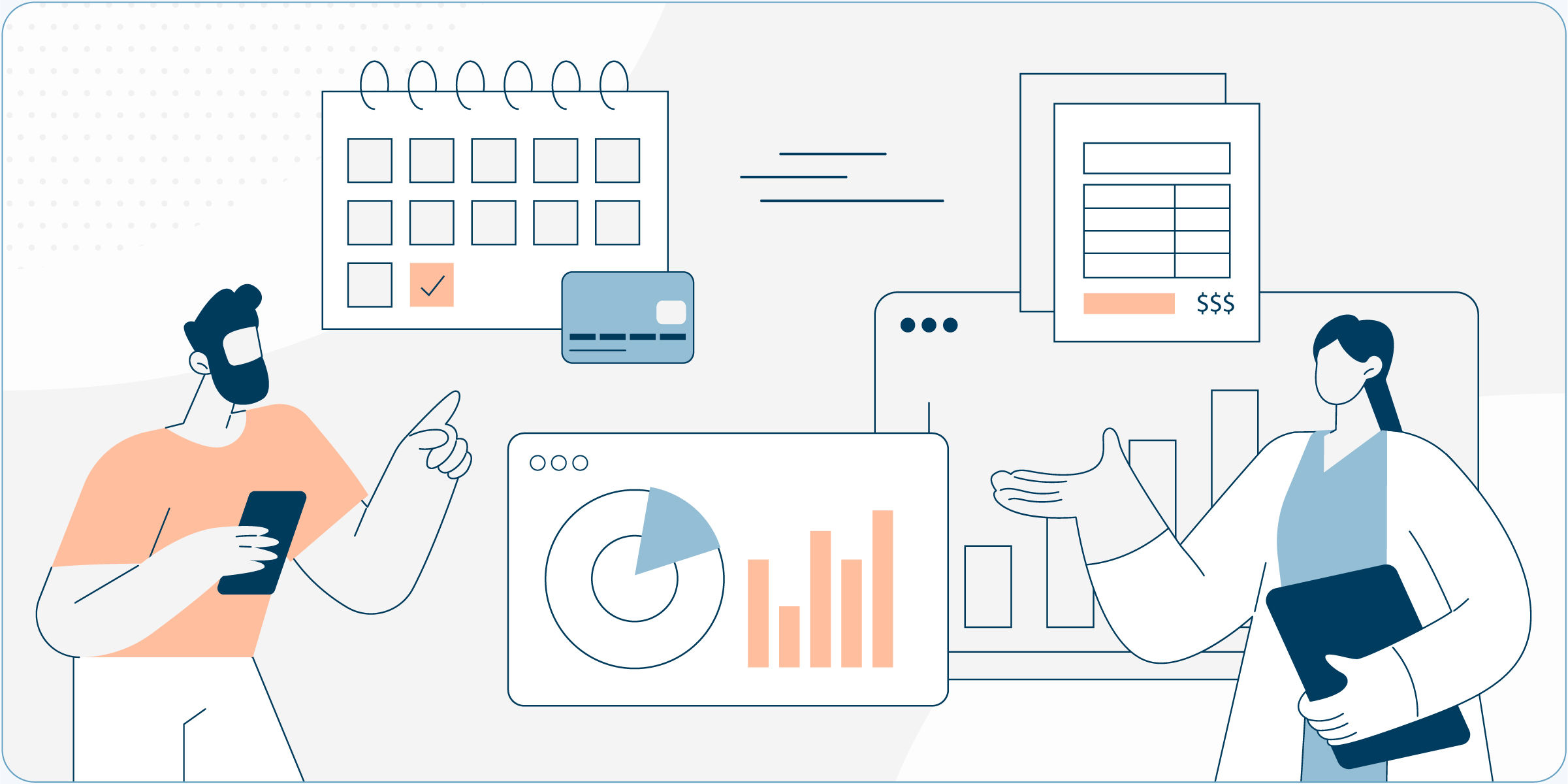With the right software, your practice can comply with healthcare regulations like HIPAA and improve revenue cycle management, reduce billing errors, and increase patient satisfaction.
The medical billing software market is growing rapidly. According to Fortune Business Insights, the global medical billing outsourcing market is expected to reach $31.78 billion by 2030. The rapid growth of the market—and the huge net worth—show just how important medical billing is becoming.
With the right software, your practice can comply with healthcare regulations like HIPAA and improve revenue cycle management, reduce billing errors, and increase patient satisfaction. The wrong software, however, will do the opposite: slow processes, increase patient and employee frustration, and introduce numerous security vulnerabilities.
So how do you choose the right medical billing software for your practice? Below, we’ll delve into the top features to look for in software platforms and how to ensure solutions meet the needs of your practice.
Evaluating Your Practice’s Software Needs
Before you start comparing software platforms, you need to evaluate the needs of your practice. This process plays a huge role in which software platform you select. Start with a thorough assessment of your practice’s specific needs. This includes understanding the following:
- Size of your practice: The size of your practice directly impacts the software you’ll need. Smaller practices might benefit from more user-friendly, cost-effective solutions. On the other hand, larger organizations may require comprehensive systems with more advanced features, such as integration capabilities with electronic health records (EHR) systems and enough scalability to support growth.
- Specialty-specific features: Depending on your practice’s specialty, you may need software that can handle your unique billing requirements and codes. Additionally, you’ll want to look for software that caters to your specialty so you can reduce errors and improve claim acceptance rates.
- Overall goals: Consider long-term goals, including plans for expansion, the need for interoperability with other systems, and improving patient engagement through your billing processes.
For example, if you’re at a multi-speciality clinic, you’ll likely require a more robust solution with more advanced features. But if you’re running a small, single-specialty practice, you’ll want something more simple and straightforward.
Comparing Billing Software Options
Once you have a clear picture of your practice’s needs, you can then start comparing different software platforms. As you’re comparing various solutions, you’ll want to keep the following in mind:
Features and Functionality
This is arguably the most important consideration when choosing billing software. In addition to ensuring the platform can meet your basic needs, you’ll also want to consider how customizable and flexible each solution is. Can the software adapt to your specific billing workflows, or is it a one-size-fits-all solution? You’ll want to ensure you can customize reports, dashboards, and billing rules to maximize efficiency.
You’ll also want to consider using software with automation capabilities. Billing software with automated or natural language processing tools can automate the plan enrollment process or answer common billing questions. These tools can also help streamline claim submission, eligibility verification, and other routine processes.
Finally, look for platforms that provide detailed analytics and reporting capabilities. These tools offer critical insight into your practice’s financial performance, claim denials, and reimbursement trends. You’ll want to evaluate the depth and breadth of these reporting tools and ensure you can create custom reports tailored to the relevant data points of your practice.
Compliance and Security
Cybercriminals are becoming increasingly smarter and more resilient. According to Chief Healthcare Executive, healthcare cybersecurity attacks affected more than 100 million people in 2023. You want to ensure your medical billing software can effectively safeguard patient information against common cybersecurity tactics.
Look for solutions that include end-to-end encryption, role-based access, and other security protocols to protect sensitive patient data — both at rest and in motion. Additionally, you’ll want software that meets HIPAA, ICD-10, and MIPS healthcare regulations.
Integration Capabilities
To optimize efficiency, look for software platforms with strong integration capabilities with your EHR system. This ensures you can streamline workflows, reduce errors, and improve patient communication. You’ll also want to consider the software’s ability to integrate with your practice’s additional tools and platforms, including scheduling software, patient engagement tools, and payment processing systems. Seamless integration with these tools enhances your practice’s overall efficiency and patient experience.
Cost
Look for transparency in pricing structures. Are there hidden fees for implementation? Training? Additional users? You’ll want to ensure you understand the total cost of ownership so you can make smart financial decisions. Additionally, you’ll need to evaluate the ROI of the software.
Support
Finally, look at the support options offered by each vendor. See if they offer adequate support, live chat options, or dedicated training. These options ensure issues are resolved quickly and accurately.
How to Successfully Implement Your Billing Software
The transition to a new medical billing system is a critical period that requires careful planning and consideration. You’ll want to create a detailed implementation plan that includes a timeline, training sessions for your staff, and a phase of parallel operation with your existing system.
Additionally, you’ll want to ensure you can safely migrate your data from the old system to the new one, so consider taking a phased approach to migration. Doing so can mitigate risks and ensure a smoother transition.
You’ll also want to provide staff training on the new software. This ensures your team is comfortable and proficient with the new system. Some software vendors will provide training programs and resources for their platforms; keep that in mind when evaluating platforms.
Before you go live with the new platform, thoroughly test it with various billing scenarios to identify and resolve any issues. This step enables you to fix them before they impact your patients.
Ready to Streamline Your Billing Process?
Choosing the right medical billing software is a multifaceted process that requires a strategic approach. Understanding your practice’s needs and carefully comparing your options can help you make a more informed decision—one that benefits both your practice and your patients.
If you’re looking for medical billing software that fulfills all the criteria mentioned above, try RXNT. Everything you need—from medical billing to patient scheduling—is included in our solution. With streamlined processes, you can focus on what matters most: providing excellent patient care.
To learn more about RXNT’s billing capabilities, contact our team for a helpful demo.


